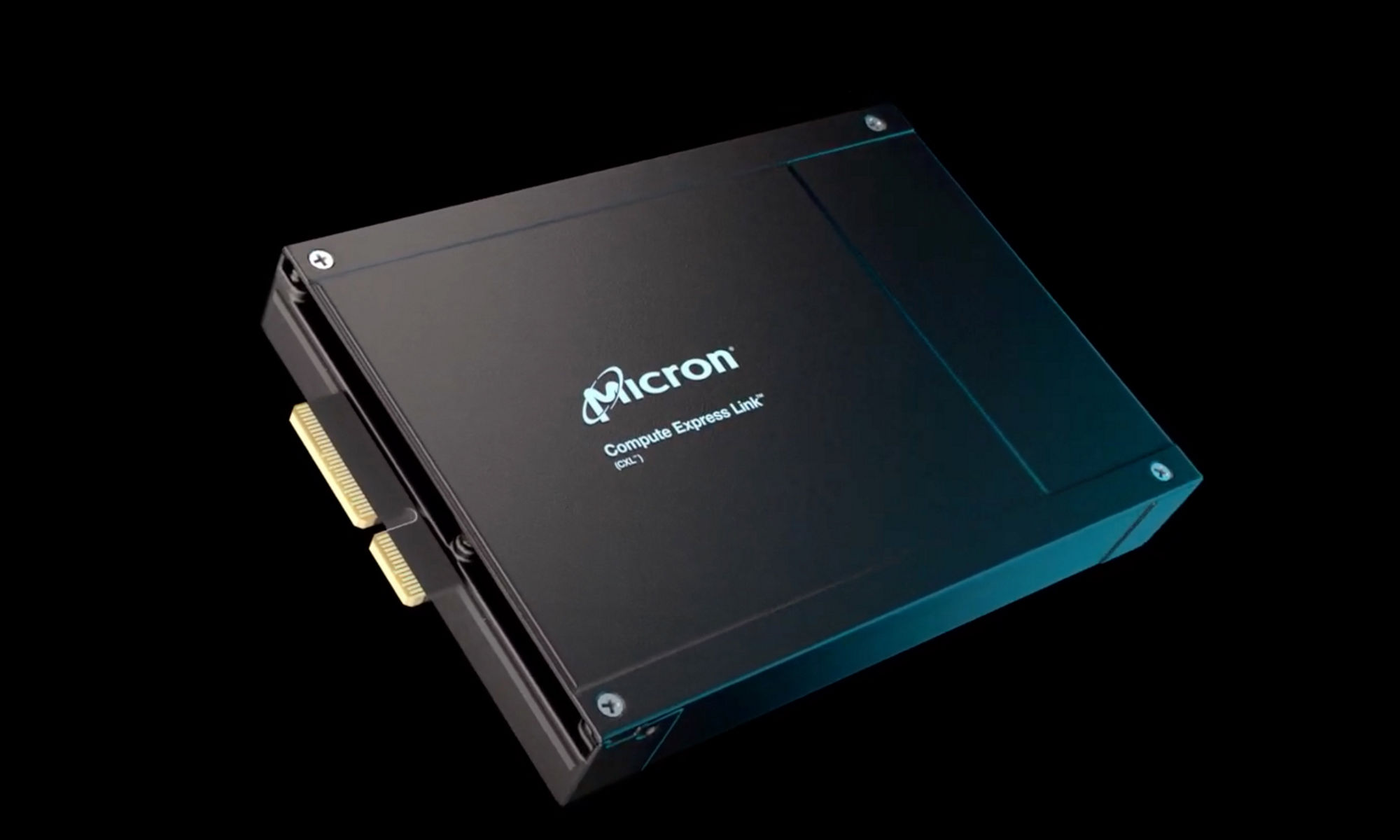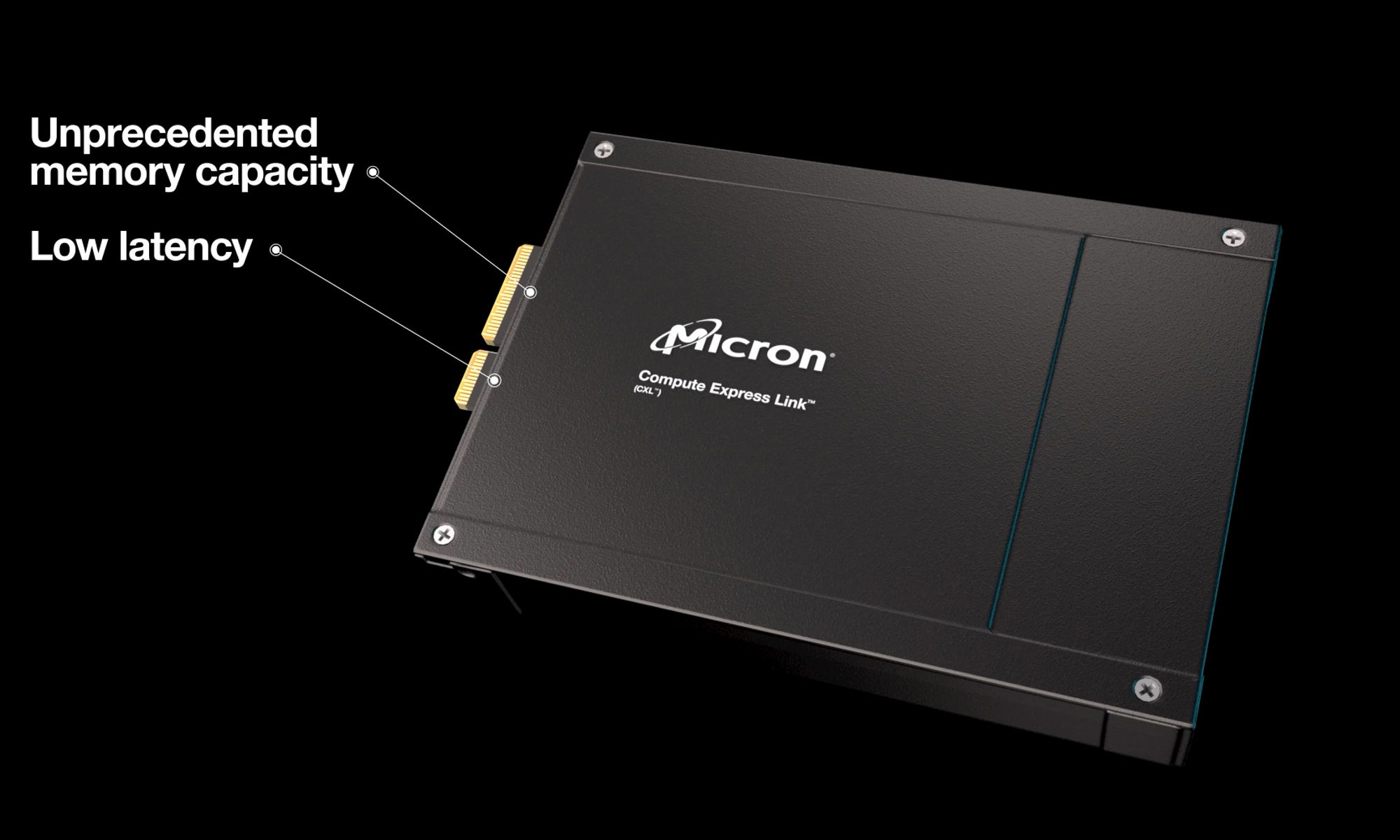Flexible memory capacity expansion for data-intensive workloads
Memory capacity expansion that optimizes cost and performance balancing compute and memory resources intelligently.
Featured resources
Additional resources
Frequently asked questions
Type 1 (CXL.io) CXL device
This protocol is used for device initialization, link-up, enumeration and device discovery. It is used for devices like FPGAs and IPUs that support CXL.io. Type 1 devices implement a fully coherent cache but no host-managed device memory.
Type 2 (CXL.cache) CXL device
This protocol implements an optional coherent cache and host-managed device memory. Typical applications are devices that have high-bandwidth memory attached.
Type 3 (CXL.mem) CXL device
This protocol is used only for host-managed device memory. Typical applications are as memory expanders for the host.
Established in 1999 by Micron Technology, the Micron Foundation is a private nonoperating corporate foundation with an endowment fund. It is recognized as a 501(c)(3) organization by the IRS.
Modern compute architectures are prone to the “memory wall” problem. CXL provides the necessary architecture to bring balance to the compute and memory scaling gap. It creates a new vector to achieve economically viable memory solutions through memory expansion, impacting DRAM bit growth rate.
Additionally, CXL’s flexible and scalable architecture provides higher utilization and operational efficiency of compute and memory resources to scale-up or scale-out resources based on workload demands.
To learn more on Micron’s perspective on the impact of CXL on DRAM bit growth rate, read our white paper.
Modern parallel computer architectures are prone to system bottlenecks that limit performance for application processing. Historically, this has been known as the “memory wall”, where the rate of improvement in microprocessor performance far exceeds the rate of improvement in DRAM memory speed.
CXL protocol properties for memory-device cohesion and coherency address the memory wall by enabling memory expansion beyond server DIMM slots. CXL memory expansion serves as a two-prong approach by adding bandwidth to overcome the memory wall as well as adding capacity for data-intensive workloads for CXL-enabled servers.
CXL attached memory provides tremendous opportunity for growth in new areas for tiered memory storage and enabling memory scaling independent of CPU cores. CXL will help sustain a higher rate of DRAM bit growth, but don’t expect CXL to cause an acceleration in DRAM bit growth. Overall, it’s a net positive for DRAM growth.
Micron’s commitment to CXL technology enables customers and suppliers to drive the ecosystem for memory innovation solutions. To learn more on how Micron is enabling next-generation data center innovation on our data center solution page.
CXL is a cost-effective, flexible, and scalable architectural solution that will shape the data center of the future. It will change how traditional rack and stack architecture of servers and fabric switches are deployed in the data center.
Purpose-built servers that have dedicated fixed resources comprised of CPU, memory, network and storage components will give way to these more flexible and scalable architectures. Servers in the rack – once interconnected to fixed resources for network, storage and compute – will be dynamically composed to meet the demands of modern and emerging workloads such as AI and deep learning. Eventually, the data center will migrate towards complete disaggregation of all server elements, including compute, memory, network, and storage.
1. MLC bandwidth using 12-channel 4800 MT/s RDIMM + 4 x 256GB CZ120 vs. RDIMM only.










